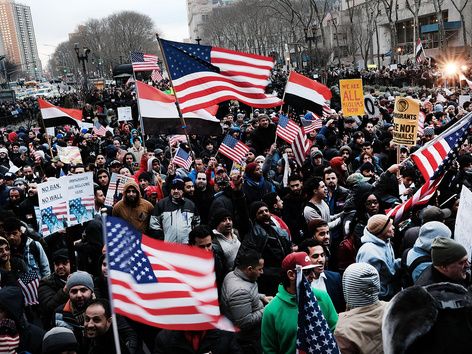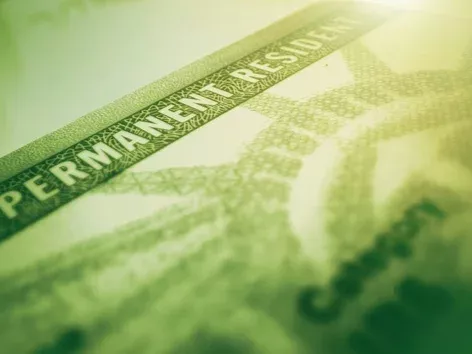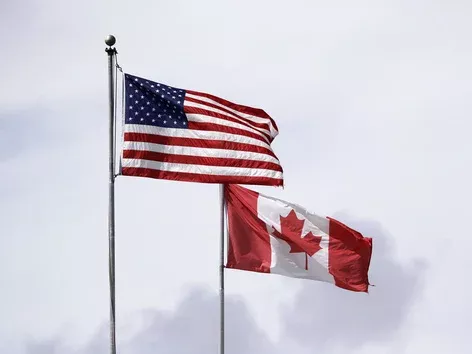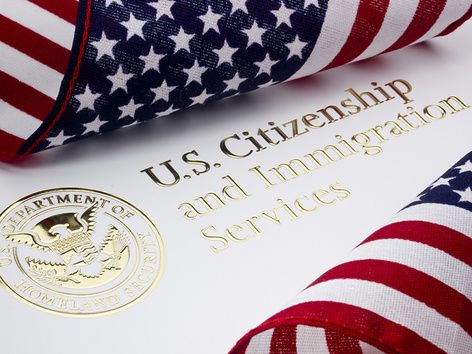Is it legal to cross the U.S. border to seek asylum?

Families are fleeing violence and persecution in their home countries, including unprecedented and growing humanitarian crises in Latin America, the Caribbean, Afghanistan, and parts of Africa, to find safety in the United States. Learn more about whether it is legal to cross the U.S. border to seek political asylum
People who arrive at the United States border have the right to seek asylum without fear of being detained, sent back, used for political stunts, or separated from their children.
Political protection is granted to persons who are unable or unwilling to return to their country because of persecution or a well-founded fear of persecution on the basis of race, religion, nationality, membership in a particular social group or political opinion.
After the atrocities of World War II, the right to seek asylum became part of international law. When Congress passed the Refugee Act of 1980, it incorporated the main provisions of the Geneva Convention relating to the Status of Refugees, including the international definition of refugees, into U.S. immigration law.
Who is an asylum seeker?
A person who has left their home to seek safety and protection in another country is called an asylum seeker. Asylum seekers can be of any age, gender, socioeconomic status, or nationality, but most come from regions of the world that are plagued by conflict, natural disasters, and weak rule of law.
In the United States, the term "Asylee" is used to refer to people who have been granted asylum. An asylee is legally allowed to remain in the country without fear of deportation under United States immigration law. They have the right to work, travel outside the country, and apply for entry for their spouse under the age of 21. Provided that they meet all other requirements, asylum seekers have the opportunity to become permanent residents and then citizens.
A person cannot be granted asylum if they do not meet the definition of a refugee. International law recognizes that the process of determining refugee status can be complex and lengthy. Thus, before a state officially recognizes asylum seekers as refugees, they must receive certain protections. Asylum seekers begin their process either in the United States or at the United States border.
Is it legal to apply for asylum in the United States?
Seeking asylum is Godly. To request the opportunity to apply for asylum, asylum seekers must be in the United States or at a point of entry (airport or official land border crossing).
In recent months, many states have been sending asylum seekers arriving in the United States to various locations, including New York City.
Asylum seekers have been arriving in cities and states across the United States for many years. For decades, communities on the southern border have provided refugee reception services to help refugees meet their basic needs. However, such support has been less organized in U.S. interior communities. At the moment, there is no common system or legal framework in the United States that allows for such humanitarian reception throughout the country.
Local communities in New York City and other cities have consistently demonstrated their willingness to accept asylum seekers. In addition, the International Resource Center works with governments and nonprofit organizations at home and abroad to provide training and resources for case management, humanitarian reception, and legal assistance. In 2022, more than 62,000 asylum seekers, unaccompanied children, and other vulnerable individuals seeking protection in the United States were assisted.
Creating an effective, welcoming, and safe refugee reception system means not only treating those fleeing violence and persecution with dignity while going through the legal process, but also ensuring that the local communities that organize this system are not responsible only for themselves. Information, fast processing and a friendly welcome are essential for a safe, orderly and humane process. To achieve this across the country, all levels of government and non-profit organizations must work together.
How do people seek asylum at the U.S. border?
People's access to asylum at the border has been severely restricted under the Trump administration, despite international and U.S. standards, and many of the most brutal policies continued under the Biden administration.
Policy Migrant protection protocols for refugees from Mexico
A policy called "Remain in Mexico" or "Migrant Protection Protocols" forced some asylum seekers to wait for their cases to be heard in United States immigration courts in Mexico with limited or even no access to a lawyer. Although a federal court enjoined the Biden administration's attempts to halt the program, the Supreme Court later ruled in favor of the administration.
For more than three years, MPP has affected more than 75,000 asylum seekers, forcing them to wait for hearings in U.S. courts in Mexico, mostly in towns along the northern border. There, in an effort to keep their families safe, they often faced unrealistic expectations to gather evidence and prepare for an English trial.
Section 42 migration program
In March 2020, during the COVID-19 pandemic, the Trump administration implemented a public health rule that prohibited asylum seekers from traveling outside the country without giving them the opportunity to present their asylum case. Because its power is derived from Title 42 of the U.S. Code, this rule is commonly referred to as "Section 42."
Section 42 has been used to justify nearly three million deportations under the pretext of public health between March 2020 and May 2023. Section 42 does not provide protection against COVID-19, health officials have agreed. The rule has raised a number of legal challenges, as it undermines the United States' obligations to asylum seekers under domestic and international law. From a public health perspective, denying people their legal right to seek asylum is not justified.
The federal COVID-19 public health order expired on May 11, 2023. Nevertheless, the rights of asylum seekers at the US-Mexico border continue to be affected by the implementation of the President's "asylum ban."
Where do asylum seekers come from in the United States?
Many asylum seekers are fleeing natural disasters, violence, and persecution in Haiti and northern Central America. In addition, people from Cuba, Nicaragua, Brazil, India, Eritrea, Ghana, Ethiopia, and Cameroon are also seeking asylum. Many Afghans, as well as those displaced to Ukraine as a result of the war, have also crossed the border into Mexico to seek asylum. People in northern Central American countries face violence similar to that in a war zone.
With a murder rate of 38 per 100,000 people, Honduras is considered the most dangerous country in the region. One woman is killed every 36 hours due to gender-based violence. The number of people in need of assistance has more than doubled since 2020 due to ongoing gang violence, extreme weather conditions caused by climate change, and the effects of the COVID-19 pandemic, which are exacerbating the crisis.
Murders and kidnappings are on the rise in Haiti, and criminal gangs control 40% of the country's capital. In addition, gangs control ports and transportation routes, limiting the flow of essential goods and impeding humanitarian access.
A powerful earthquake and tropical storm followed the assassination of the Haitian president in the summer of 2021. Over the past ten years, Haitian infrastructure and services have been destroyed. In addition, Haiti is experiencing the world's longest recession; approximately 60% of its population lives in poverty.
After fleeing their homes, asylum seekers must make the extremely dangerous journey north, fraught with gang violence similar to that from which they are fleeing; gender-based violence targeting women, girls and members of the LGBTQ+ community; the risk of trafficking of children, adolescents and women; and, in particular, racism and discrimination, especially against people of color.
Apply for a tourist visa on our Visit World service.
Write to the manager on the Hotline and he will select a visa for you.
Contact via Whatsapp
Contact us via Facebook
Products from Visit World for a comfortable trip:
Checklist for obtaining a visa and necessary documents in the United States;
Legal advice on business issues in the United States;
Travel insurance for foreigners in the United States;
Medical insurance around the world.
More articles on the topic:
Car insurance for foreign drivers in the USA: what you need to know.
What are the employment opportunities in the USA for foreigners?
The United States needs more migrants to address labor shortages.
The American health care system: an in-depth guide for expats.
Scholarships for International Students in the USA for 2024/2025.
The foreign housing exclusion: a guide for American expats.
Recommended articles
3 min
Residence permit
Green Card in the USA: step by step instructions for filling out Form I-485
Form I-485, officially known as the "Application for Registration of Permanent Residence or Change of Status". Find out more about who is eligible to fill out Form I-485, the list of required documents, the Green Card application procedure, and other important details
25 Jul. 2025
More details2 min
Expats
USA vs Canada for Expats: where should you move better?
Changing your place of residence and moving to a new country is a life-changing experience, and choosing where to relocate can be difficult. The United States and Canada are two popular choices for immigrants considering a move to North America. Learn more about the pros and cons of living in Canada and the United States for relocation
05 Oct. 2023
More details2 min
Treatment
Medicine in Europe and the USA: what tourists and expats need to know
The healthcare system is one of the most important areas of life, reflecting the level of well-being of society and the priorities of the state. Find out how medicine works in Europe and the USA: what financing principles apply in different countries, how health insurance is organized, how much treatment costs, and what advantages and disadvantages each system has
23 Nov. 2025
More details2 min
Expats
H-2B visa in USA: the US plans to issue 64,716 additional H-2B visas in 2025
The U.S. Department of Homeland Security (DHS) announced that it plans to issue 64,716 additional H-2B visas in fiscal year 2025. This decision is aimed at solving the problem of labor shortages, particularly in such a scarce industry as tourism. Find out in detail how the H-2B visa will be distributed in 2025 and what are the main requirements for applicants
09 Dec. 2024
More detailsAll materials and articles are owned by VisitWorld.Today and are protected by international intellectual property regulations. When using materials, approval from VisitWorld.Today is required.
